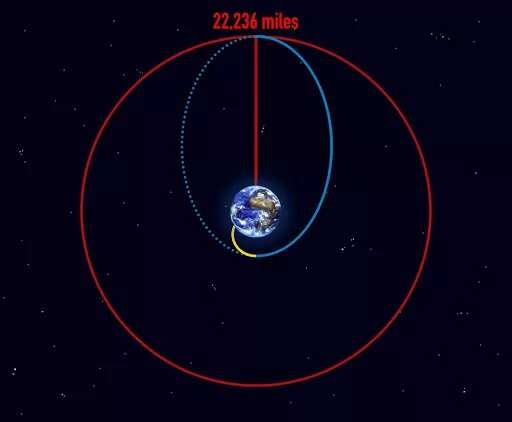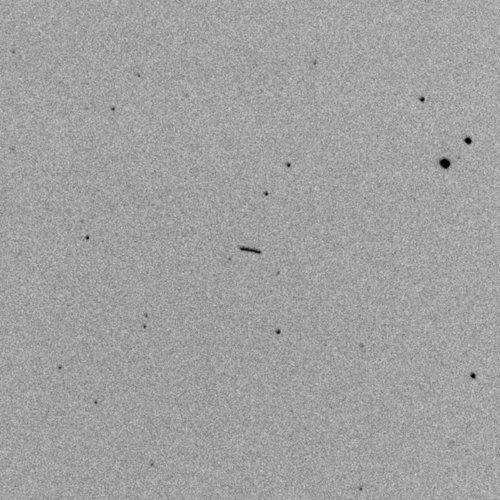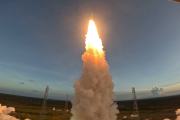
Copernical Team
NOAA's GOES-T reaches geostationary orbit, now designated GOES-18

MDA retires space tracking and surveillance system after 12 years, thousands of missions
Millennium Space Systems shipped GEO Wide Field of View for launch
 The U.S. Space Force's Wide Field of View spacecraft arrived safely on February 2 to the launch processing facility in Florida, having shipped from Millennium Space Systems, a Boeing (NYSE: BA) company's headquarters in El Segundo, California.
This satellite was procured by the Space Systems Command to serve as testbed for Wide Field of View technologies in geosynchronous, or GEO, orbit fo
The U.S. Space Force's Wide Field of View spacecraft arrived safely on February 2 to the launch processing facility in Florida, having shipped from Millennium Space Systems, a Boeing (NYSE: BA) company's headquarters in El Segundo, California.
This satellite was procured by the Space Systems Command to serve as testbed for Wide Field of View technologies in geosynchronous, or GEO, orbit fo GMV guarantees PAZ satellite services
 GMV , the world's number-one independent supplier of telecommunication satellite control centers and responsible for designing, developing, validating, and implementing the control center and user services included in the ground segment of the PAZ satellite, has signed a new contract with INTA (Instituto Nacional de Tecnica Aeroespacial) for the corrective maintenance of the main elements of its
GMV , the world's number-one independent supplier of telecommunication satellite control centers and responsible for designing, developing, validating, and implementing the control center and user services included in the ground segment of the PAZ satellite, has signed a new contract with INTA (Instituto Nacional de Tecnica Aeroespacial) for the corrective maintenance of the main elements of its Fifth asteroid ever discovered before impact

NASA says Mark Vande Hei will return from ISS on Russian spacecraft
 NASA on Monday said astronaut Mark Vande Hei would return from the International Space Station aboard a Russian Soyuz spacecraft as planned, amid Russia's invasion of Ukraine.
The space agency said Vande Hei, who was sent to the ISS in April of last year, is scheduled to land aboard the Soyuz spacecraft in Kazakhstan and return to the United States on a Gulfstream jet - as is customary
NASA on Monday said astronaut Mark Vande Hei would return from the International Space Station aboard a Russian Soyuz spacecraft as planned, amid Russia's invasion of Ukraine.
The space agency said Vande Hei, who was sent to the ISS in April of last year, is scheduled to land aboard the Soyuz spacecraft in Kazakhstan and return to the United States on a Gulfstream jet - as is customary Scientists, undergraduates team up to protect astronauts from radiation
 Elena D'Onghia has spent her career puzzling over the behavior of the Milky Way's closest neighbors, the dwarf galaxies known as the Magellanic Clouds.
Their story is an epic tale of twirling streams of gas larger than humans can really imagine. But, like most astronomical phenomena, the Magellanic Clouds are far removed from daily life on Earth. A good 160,000 light years removed, in fact
Elena D'Onghia has spent her career puzzling over the behavior of the Milky Way's closest neighbors, the dwarf galaxies known as the Magellanic Clouds.
Their story is an epic tale of twirling streams of gas larger than humans can really imagine. But, like most astronomical phenomena, the Magellanic Clouds are far removed from daily life on Earth. A good 160,000 light years removed, in fact New space funding paves the way for pioneering approaches to energy, communication and resources
 British space technology will help pioneer new approaches to energy, communications and resources, thanks to new projects from the UK Space Agency
Science and Innovation Minister George Freeman announced the 2 million pound boost for 13 new projects during British Science Week (11-20 March), which aims to inspire interest in and celebrate science, engineering, technology and maths for peop
British space technology will help pioneer new approaches to energy, communications and resources, thanks to new projects from the UK Space Agency
Science and Innovation Minister George Freeman announced the 2 million pound boost for 13 new projects during British Science Week (11-20 March), which aims to inspire interest in and celebrate science, engineering, technology and maths for peop Astra announces multi-launch contract and first launch with Spaceflight Inc.
 Astra Space, Inc. (NASDAQ: ASTR) and Spaceflight Inc. ("Spaceflight"), the leading global launch services provider, has announced a multi-launch contract. The first launch under this contract is planned for March 14, 2022, with a window opening at 9:22am PDT / 16:22 UTC out of the Astra Spaceport in Kodiak, Alaska, but may be shifted to March 15, 2022 depending on conditions at the launch site.
Astra Space, Inc. (NASDAQ: ASTR) and Spaceflight Inc. ("Spaceflight"), the leading global launch services provider, has announced a multi-launch contract. The first launch under this contract is planned for March 14, 2022, with a window opening at 9:22am PDT / 16:22 UTC out of the Astra Spaceport in Kodiak, Alaska, but may be shifted to March 15, 2022 depending on conditions at the launch site. Space Park Leicester launched by British astronaut Tim Peake
 UK astronaut Tim Peake officially opened Leicester's pioneering space research, innovation and teaching cluster at a special ceremony on Monday.
Space Park Leicester is forecast to contribute 750m pounds a year to the UK space sector over the next decade and is expected to support more than 2,500 direct and indirect jobs in the East Midlands1.
The first British European Space Agency
UK astronaut Tim Peake officially opened Leicester's pioneering space research, innovation and teaching cluster at a special ceremony on Monday.
Space Park Leicester is forecast to contribute 750m pounds a year to the UK space sector over the next decade and is expected to support more than 2,500 direct and indirect jobs in the East Midlands1.
The first British European Space Agency 

































